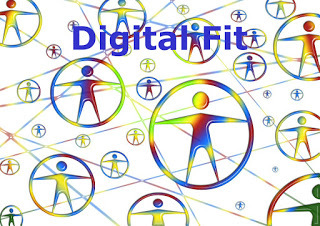The New Book “Talent Master” Introduction Chapter 1: Digital Fit
 People are always the most invaluable asset in businesses. “Hiring the right people with right capabilities to do right jobs at the right position,” needs to be the mantra for any forward thinking organizations today. However, how would you define the right people, how do you define “Digital Fit”?
People are always the most invaluable asset in businesses. “Hiring the right people with right capabilities to do right jobs at the right position,” needs to be the mantra for any forward thinking organizations today. However, how would you define the right people, how do you define “Digital Fit”?
Digital fit starts with Mind Fit: Where you want to look for “fit,” is in relation to the cognitive intelligence to speed up digital transformation. “Fit” doesn’t mean that everyone needs to have the same thought process, same personalities, same preferences, or same experiences. On the opposite, the beauty is in the color of characters and many shades of creativity. Organizational fit means “incluversity” (Inclusiveness + diversity), not about cooke cutting or hiring colones. Fit or misfit is contextual. Organizations need to be thoughtful about whether you are hiring people who are an obvious “ fit,” and passing on people who are less so, at least on the surface. Mindset, skills, capabilities, and experience diversity are what make effective innovation and growth possible, the “conventional fitness,” makes relationship easier, but perpetuates status quo, and increase “change inertia.” The fitness is all about building a culture of creativity and productivity, and working as a team to reach the ultimate business goals for the long term.
Digital fit profile and portfolio: Your digital footprint becomes more crucial to reflect “who you are,” than your physical activities, because if flows and dynamic, amplifies and transparent, it often reflects your thought processes behind behaviors, your innate strengths and professional brand. Hence, your digital profile needs to have a cohesive consistency with your “true-self,” though it doesn’t mean it should be as tedious as some daily routine. Digital professionals today need to build an enriched digital portfolio via reinvent themselves, continuous building new skills and capabilities, seeking unconventional wisdom, developing the next “digital fitness” practices, etc.
 Digital flexibility: Although the meaning of the word flexibility in general more refers to physical movement capable of being bent without breaking, from management psychological perspective, it’s about the adaptation to changes, the alternative way to do things, and resilience to survive or thrive from the failure. A digital professional with flexibility loves choices, enjoys making differences, feels comfortable to be unique, and welcomes the diversity of thoughts as a fountain of creativity. It’s easy to say you are flexible or playful, and have a lot of creativity, but within the walls of an organization, the overly hierarchical culture stifles innovation. A flexible team setting encourages collaborative thinking, builds adaptability to create mutual interest communities, to identify common, yet flexible process focuses on outcomes without micromanagement, and creates a sense of urgency as well.
Digital flexibility: Although the meaning of the word flexibility in general more refers to physical movement capable of being bent without breaking, from management psychological perspective, it’s about the adaptation to changes, the alternative way to do things, and resilience to survive or thrive from the failure. A digital professional with flexibility loves choices, enjoys making differences, feels comfortable to be unique, and welcomes the diversity of thoughts as a fountain of creativity. It’s easy to say you are flexible or playful, and have a lot of creativity, but within the walls of an organization, the overly hierarchical culture stifles innovation. A flexible team setting encourages collaborative thinking, builds adaptability to create mutual interest communities, to identify common, yet flexible process focuses on outcomes without micromanagement, and creates a sense of urgency as well. From people management perspective, it’s important to measure “Digital Fitness,” via both thinking performance and action performance. The traditional performance management approaches only focus on measuring behaviors and quantitative results, with ignorance of qualitative assessment about crucial traits of digital fitness such as character, indset, talent potential, multidimensional intelligence and culture effect. Ideally, in forward-thinking organizations, the division between “working,” and “thinking,” is replaced by integrating “working and thinking” at both strategic and operational level, where people do the real work by unifying their mind, heart and hands, to build a real engaging, creative, and mature digital workforce. Follow us at: @Pearl_Zhu
Published on August 13, 2016 23:45
No comments have been added yet.



